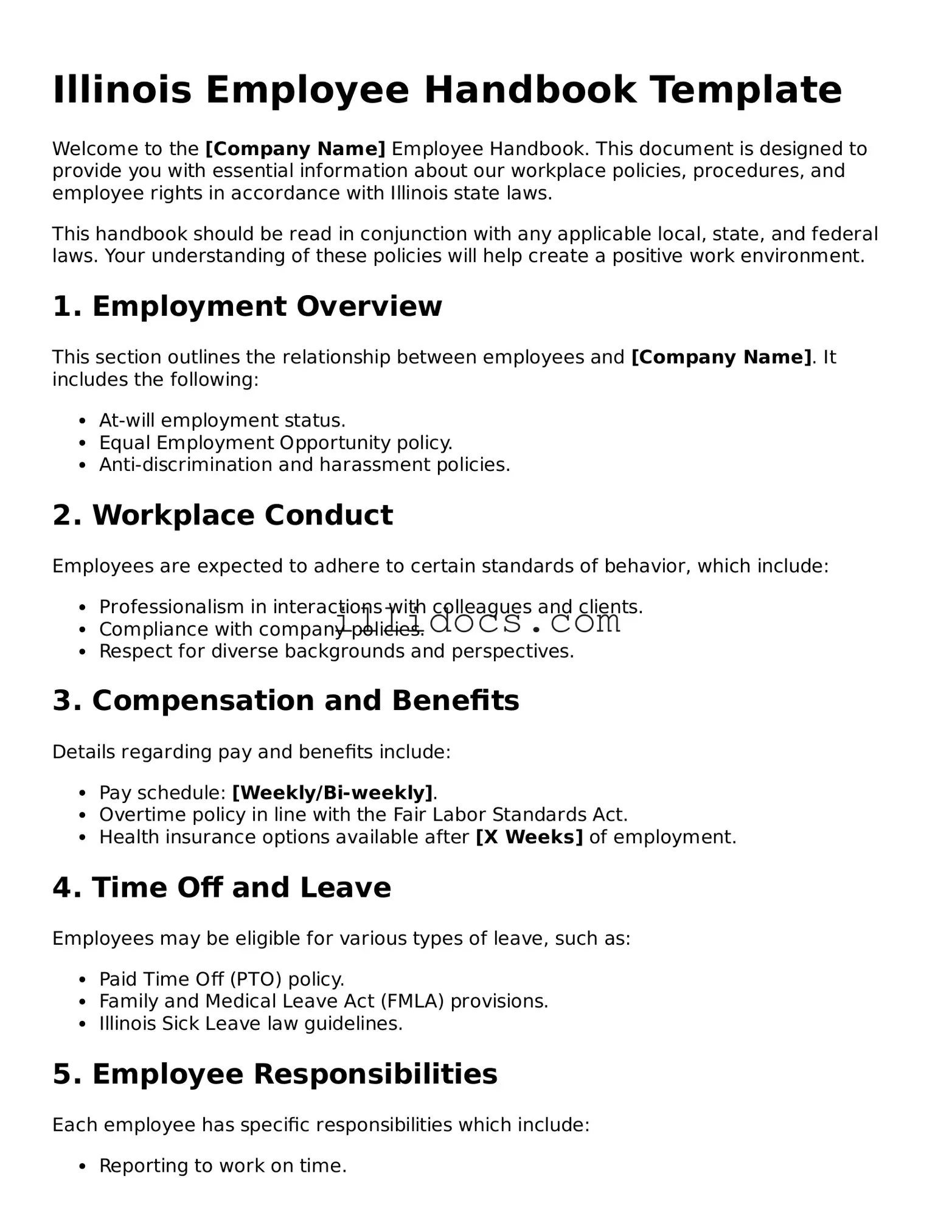What is the Illinois Employee Handbook form?
The Illinois Employee Handbook form is a document that outlines the policies, procedures, and expectations for employees within an organization. It serves as a guide for both employers and employees, detailing important information such as workplace rules, employee rights, and benefits. This form helps ensure that all employees are informed about their roles and responsibilities within the company.
Who needs to complete the Illinois Employee Handbook form?
All employers in Illinois should prepare an Employee Handbook for their employees. While not every company is legally required to provide a handbook, having one is highly recommended. It clarifies workplace policies and can help protect the employer in case of disputes. Employees should receive a copy of the handbook upon hiring or when significant updates occur.
What should be included in the Employee Handbook?
An effective Employee Handbook should include several key components. These include company history, mission and values, employment policies, code of conduct, anti-discrimination policies, benefits information, and procedures for reporting grievances. Additionally, it should outline disciplinary actions and termination processes. Clear language and straightforward explanations are crucial for ensuring that employees understand their rights and responsibilities.
How often should the Employee Handbook be updated?
The Employee Handbook should be reviewed and updated regularly. Changes in laws, company policies, or workplace practices may necessitate updates. A good practice is to review the handbook at least once a year. Employers should also update the handbook whenever there are significant changes, such as new benefits or modifications to workplace policies.
How should employees acknowledge receipt of the Employee Handbook?
Employers should have employees sign an acknowledgment form indicating that they have received and read the Employee Handbook. This acknowledgment can be a simple document stating that the employee understands the policies outlined in the handbook. Keeping these signed forms on file is important for both the employer and the employee, as it provides proof of receipt and understanding.
What should an employee do if they have questions about the Employee Handbook?
If an employee has questions or concerns regarding the Employee Handbook, they should first speak with their supervisor or human resources department. Open communication is vital. Employees should feel comfortable asking for clarification on any policies or procedures they do not understand. This dialogue can help prevent misunderstandings and promote a positive workplace environment.
